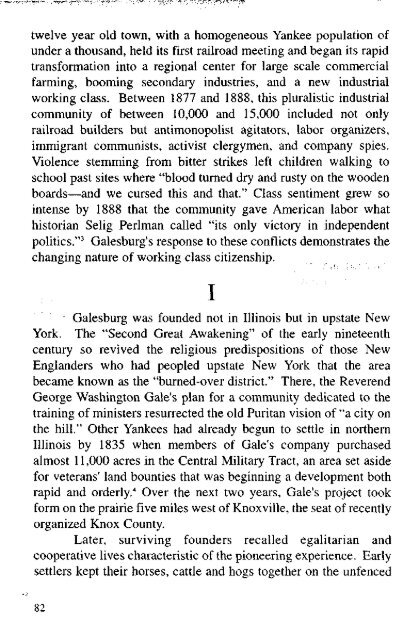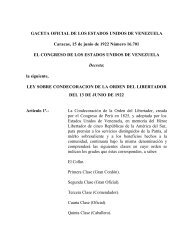"The Cruel Striker War" - NIU Digital Projects
"The Cruel Striker War" - NIU Digital Projects
"The Cruel Striker War" - NIU Digital Projects
Create successful ePaper yourself
Turn your PDF publications into a flip-book with our unique Google optimized e-Paper software.
twelve year old town, with a homogeneous Yankee population of<br />
under a thousand, held its first railroad meeting and began its rapid<br />
transformation into a regional center for large scale commercial<br />
farming, booming secondary industries, and a new industrial<br />
working class. Between 1877 and 1888, this pluralistic industrial<br />
community of between 10,000 and 15,000 included not only<br />
railroad builders but antimonopolist agitators, labor organizers,<br />
immigrant communists, activist clergymen, and company spies.<br />
Violence stemming from bitter strikes left children walking to<br />
school past sites where "blood turned dry and rusty on the wooden<br />
boards—and we cursed this and that." Class sentiment grew so<br />
intense by 1888 that the community gave American labor what<br />
historian Selig Perlman called "its only victory in independent<br />
politics." 3 Galesburg's response to these conflicts demonstrates the<br />
changing nature of working class citizenship.<br />
I<br />
Galesburg was founded not in Illinois but in upstate New<br />
York. <strong>The</strong> "Second Great Awakening" of the early nineteenth<br />
century so revived the religious predispositions of those New<br />
Englanders who had peopled upstate New York that the area<br />
became known as the "burned-over district." <strong>The</strong>re, the Reverend<br />
George Washington Gale's plan for a community dedicated to the<br />
training of ministers resurrected the old Puritan vision of "a city on<br />
the hill." Other Yankees had already begun to settle in northern<br />
Illinois by 1835 when members of Gale's company purchased<br />
almost 11,000 acres in the Central Military Tract, an area set aside<br />
for veterans' land bounties that was beginning a development both<br />
rapid and orderly. 4 Over the next two years, Gale's project took<br />
form on the prairie five miles west of Knoxville, the seat of recently<br />
organized Knox County.<br />
Later, surviving founders recalled egalitarian and<br />
cooperative lives characteristic of the pioneering experience. Early<br />
settlers kept their horses, cattle and hogs together on the unfenced<br />
82

















